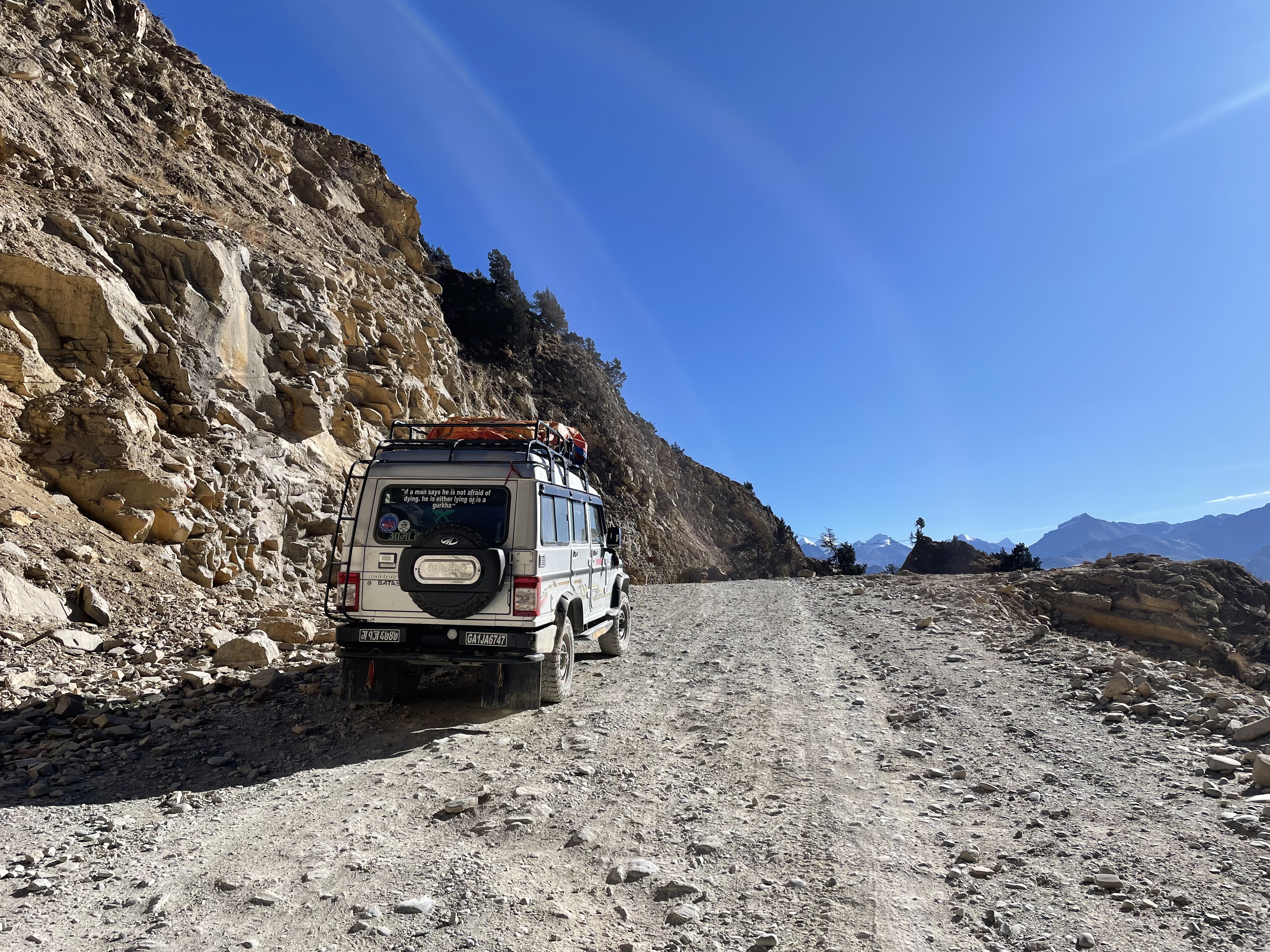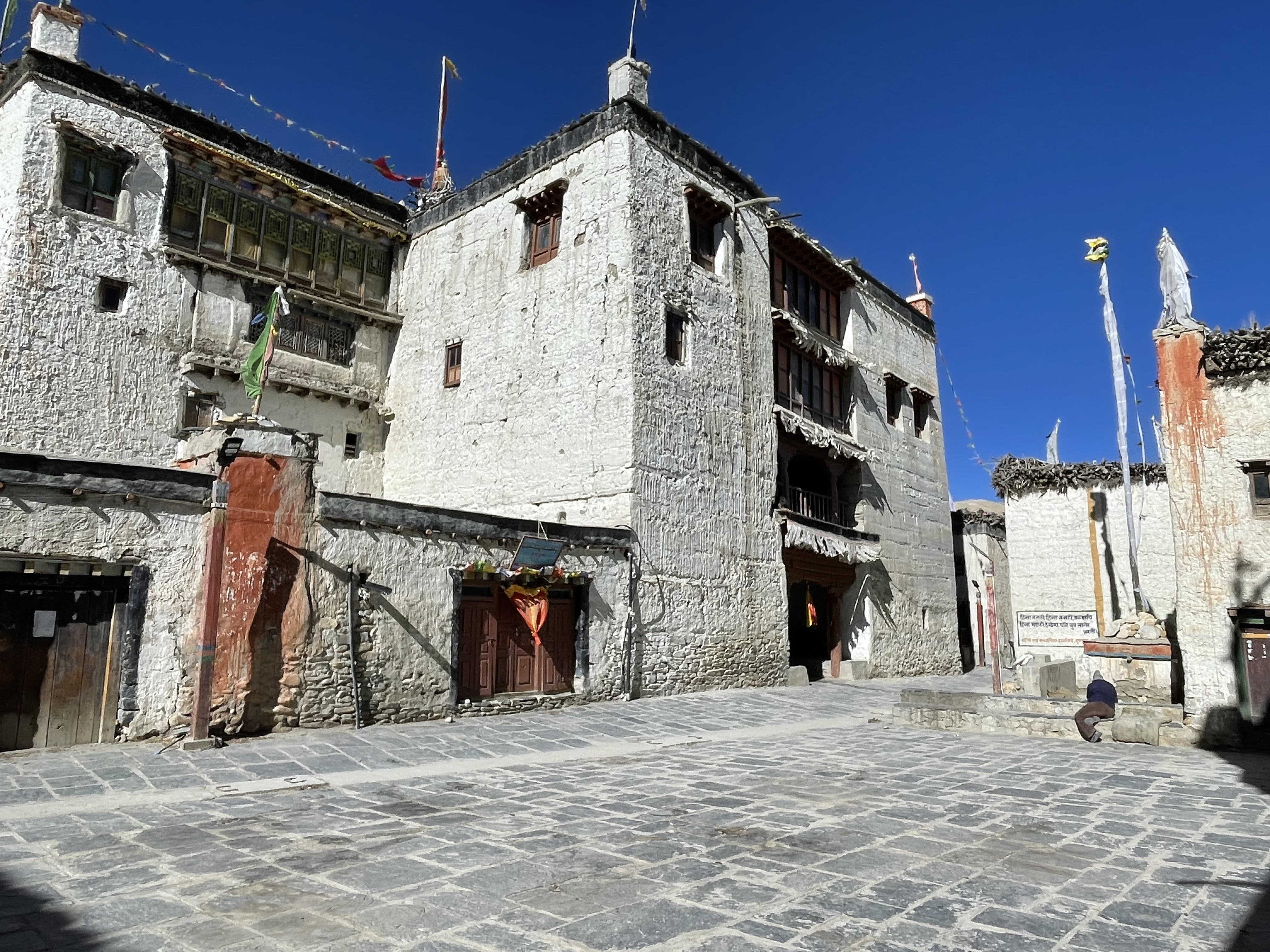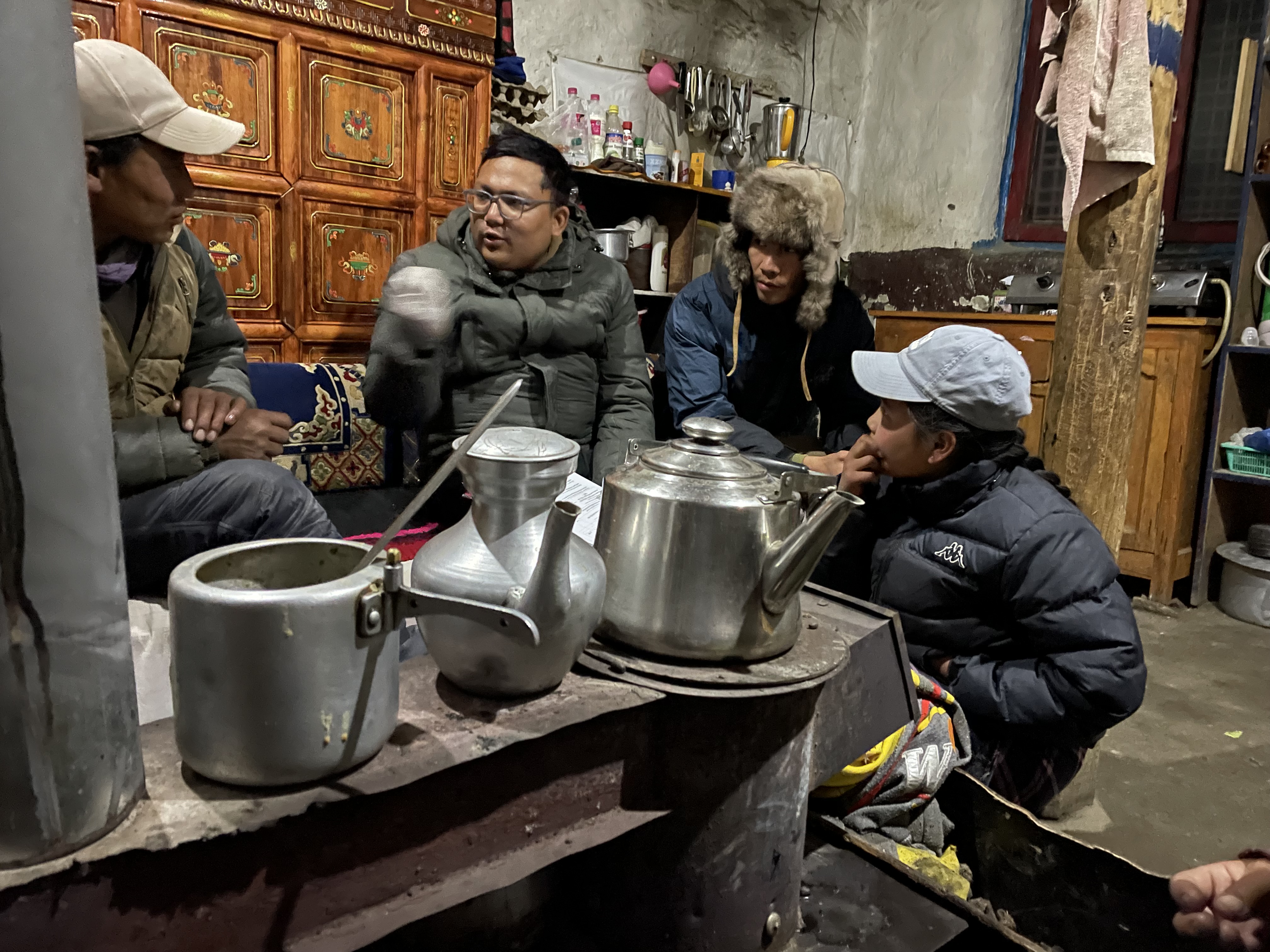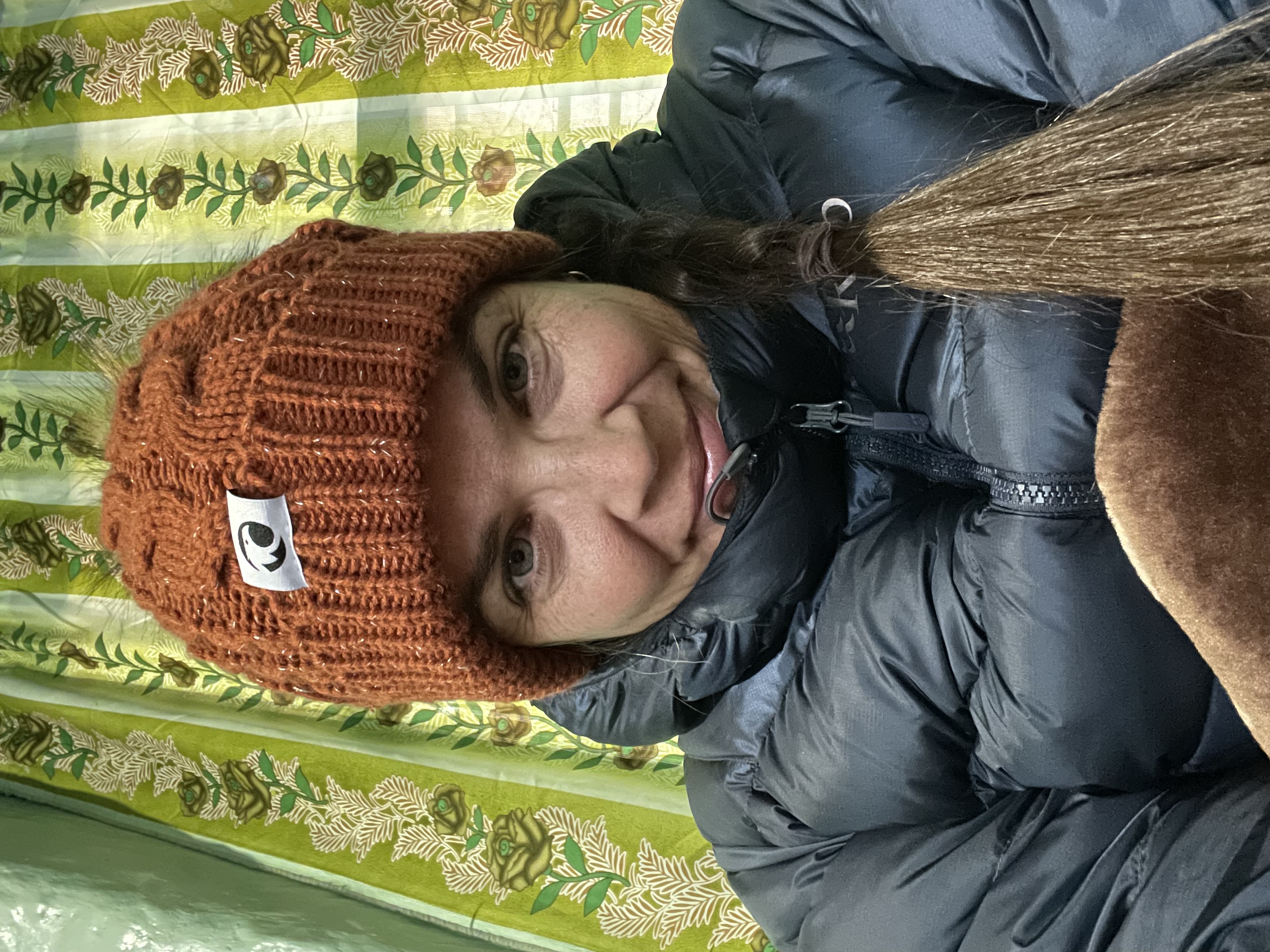Finally, after waiting for what felt like a long time, we were ready to head to the Forbidden Kingdom of Lo Manthang to hopefully collect some samples. The trip was a long one, on some crazy roads that left me physically exhausted from the tension of holding myself still and not bouncing all over the car. The walled city only recently opened to tourists, as recent as the 90s. So, many foreigners have still not had the chance to visit. Though along the way, you will pass parts of the Annapurna Circuit.

Arriving and getting a tour around was incredible. All the buildings are within the city, and some are part of the wall itself. With its big thick walls, it keeps things slightly warmer, though nights still dropped to -40 Celsius. It’s a hard way of life here. Many people leave the area during the winter and head to the bigger cities, because it’s just too hard. Those that remain, live on dried meats and goods brought in from Tibet and heat using cow dung. I talked about these things with our homestay owner, and he talked about how things have changed over the years with outside influences. How they have gone from horses to plow their fields to tractors. That the weather has become milder with climate change, and they no longer get the big isolating snows of the past and can now grow apples. I asked him if he thought having these influences on their lives and culture was a good thing and he vehemently nodded his head and said it has made their lives significantly easier, especially with the younger generation not wanting to stay and farm.

There is a large hospital being built now outside of the main town, which is a blessing because the nearest hospital is very far away and if something happens and there is weather, they would be unable to get out.
So, the plan was to stay 3 nights and collect over two days, but after much discussion we decided that we would try to collect all our samples over a shorter period. On the first night of our arrival, we headed out beyond the walls to visit the various groups of herders to start our sample collection. With a team consisting of our homestay guide (who was absolutely invaluable at helping us collect what we needed), a trekking guide, a technician and field logistics coordinator from the lab I partnered with, the wildlife vet from ACAP, and myself, we stopped at several different places where goats were being kept overnight with a small one room building housing the people caring for them. Our wildlife vet gave the short questionnaire about their feelings towards snow leopards as well as some health information about their animals and we went out to the barns and collected from fresh feces for pathogen testing.

It was extremely dark and very cold by the time we returned. With a plan to trek out to snow leopard territory the next day and collect additional livestock samples, we had a homecooked meal of dahl bat made with dried mutton and headed to bed, where we were provided thick blankets to keep us warm through the cold night.
